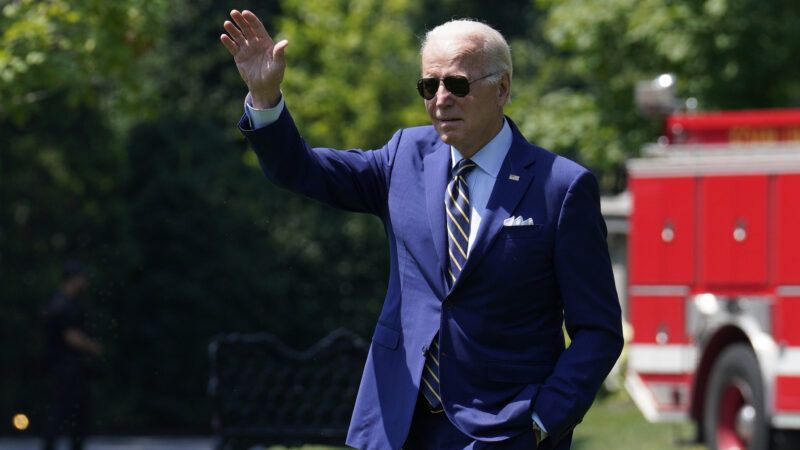President Biden Asserts 'Climate Change Is an Emergency'
But does not declare that it is a "national emergency."

President Joe Biden did not succumb to pressure from leading members of the Democratic Party to declare a national state of climate emergency in his remarks in Somerset, Massachusetts, this afternoon. Nevertheless, speaking at the site of the decommissioned coal-fired Brayton Point Power Station, Biden did assert that "climate change is an emergency" and "a clear and present danger" to the United States.
As evidence, Biden claimed that hurricanes, tornadoes, wildfires, and droughts have been getting worse. He cited losses of $145 billion in weather damages from last year. He noted that 100 million Americans are currently under heat alerts. Citing these data, the president declared that "climate change is literally an existential threat." He vowed to use his executive powers in the coming weeks to combat the threat of climate change.
Average temperatures in the contiguous United States have increased by about 2 degrees Fahrenheit since 1900. And unabated climate change could cause significant problems for humanity before the end of this century.
But are hurricanes, tornadoes, wildfires, and droughts in the U.S. getting worse? University of Colorado climate change policy researcher Roger Pielke, Jr. notes that the number of landfalling hurricanes hitting the continental United States has been falling since 1900. The Intergovernmental Panel on Climate Change's latest report observes that the annual average number of tornadoes in the U.S. has remained constant since the 1970s, although their location appears to be shifting from the Great Plains toward the mid-South. The president is right that wildfires have burned larger areas in recent years, although longer-term data show the area burnt by wildfires in the first half of the 20th century was similar to today's extent. With respect to droughts, the Southwestern U.S. is experiencing its worst drought in 12 centuries. However, the Environmental Protection Agency reports that since 1900 "the overall trend has been toward wetter conditions" nationally.
What about the $145 billion in weather damages last year? Pielke notes that figure is about the average to be expected given the increase in infrastructure and housing exposed to weather events. He adds that the overall trend in global weather losses as percent of global GDP has been falling since 1990.
Biden noted the site that the former power plant is now being used to manufacture the high-tech subsea cables that will connect the offshore Vineyard Wind project to the electrical grid on land. He also noted that the Brayton coal-fired plant's generation capacity was once 1,500 megawatts and supplied electricity to one in five homes in New England. That would amount to nearly 1.2 million homes, assuming the president's figures are accurate. Accounting for fickle breezes, the 800-megawatt Vineyard Wind project is slated to generate enough energy to power 400,000 homes.
Show Comments (201)